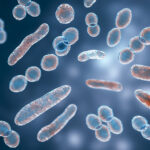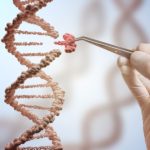By David Blyweiss, M.D., Advanced Natural Wellness
Are you feeling run-down and exhausted? It could be anemia, the most common blood disorder in America. According to the Mayo Clinic, more than 3.4 million Americans suffer with some form of anemia. Symptoms can include fatigue, weakness, shortness of breath, pale skin and cold or numb hands and feet. You can also experience headaches and may find that your nails break easily.
What exactly is anemia, and do you really need to worry about it? Let’s start with the basics. Your blood consists of a liquid (called plasma) and three different types of cells: white blood cells to fight infection, platelets to help your blood to clot and red blood cells to transport oxygen. Anemia is a condition in which there are fewer than normal healthy red blood cells.
This can pose a serious problem because your red blood cells have important work to do inside the body. They take oxygen away from the lungs via the bloodstream and carry it into all tissues of your body, such as your brain and other organs. This “oxygenated” blood is what keeps you alive. The fewer oxygenated red blood cells, the weaker your tissues, organs—and ultimately you—are.
MD Exposes the Hidden Danger to Your Eyes

When your eyesight starts to fail, it's a real problem. Suddenly you can't go to the grocery store... you can't get to the doctor if you have an emergency... you can't meet your friends for dinner…
Your "regular" doctor doesn't have time to keep up with the latest research. And the same goes for eye doctors. They go to school to learn how to fit you for glasses and contacts, but have no way of preventing the damage and loss of eyesight that threatens your freedom and independence.
Let me show you something that explains a LOT about how your eyes work.
In my FREE Special Report, I'll show you a HUGE, untapped resource for your eyes that safely and naturally restores clear, effortless eyesight.
Click here to get started...
The most well-known kind of anemia is the type caused by an iron deficiency. Hemoglobin, the actual protein in red blood cells that is involved with oxygenation, is utterly dependent on iron. An iron deficiency is the main reason your blood test shows a low level of hemoglobin.
Approximately one-fifth of women, half of pregnant women and three percent of men are iron deficient. Menstruating women are also at risk, due to the monthly loss of iron in the blood. But you needn’t be young to suffer from iron deficient anemia. Anyone who has lost a lot of blood during surgery can find themselves with low iron stores. And a study by Penn State University found that mild anemia in the elderly can impair their immunity and their ability to function.
If you are indeed iron deficient, your doctor will probably prescribe iron supplements. Most people with mild or moderate iron deficiency anemia can correct the problem over a period of about three months. But it’s important to take iron only under a doctor’s supervision, especially if you are a man or a postmenopausal woman. This is because too much iron in the body can be just as dangerous as too little. As iron builds up in the bloodstream, it can easily reach toxic levels and increase the risk of both cancer and heart disease.
Your doctor can determine if you are anemic with a basic blood test called a complete blood count (CBC). This test will give you a reading of both your hemoglobin levels and your hematocrit (the actual percentage of red blood cells found in a blood sample). Once your doctor knows these numbers, he or she can map out a plan of action to get your iron levels into the normal range.
The World's Quickest Solution for Ending Prostate and Urinary Misery
This has recently been revealed to be one of the only real breakthroughs in prostate health.
The seeds of a strange fruit (sometimes called "Chinese Apples") hold powerful phytonutrients that are a revolution in prostate health.
In fact, UCLA and Veterans Administration research have now proved this to be true.
Not only that, but it may be the worlds quickest solution for ending prostate misery.
Simply stated, these phytonutrients represent a huge step beyond beta sitosterol, saw palmetto, and other phytosterols alone.
Simply click HERE if you want to have fast prostate relief...restful, uninterrupted sleep...no more constant "urges to go"...enhanced virility...and optimal prostate support for life.
But iron isn’t always the culprit. Another common form of anemia is known as megaloblastic anemia. The most common causes of megaloblastic anemia are deficiencies of either vitamin B12 or folic acid, both of which play essential roles in the production of red blood cells. You can get folic acid from green leafy vegetables and liver, and most cereals are fortified with it. It’s also smart to take it in supplemental form. Try to get at least 800 mcg. a day.
Vitamin B12 is another nutrient that fosters healthy red blood cells and ensures protection against anemia. One problem with B12 is that it’s not always well absorbed from food. Another problem is that the main dietary sources of vitamin B12 are meat, eggs and dairy—all animal products. This means that, if you are a vegetarian or don’t consume much meat, it is likely you aren’t getting enough of this vitamin. If you are a vegetarian you should definitely be taking vitamin B12 supplements, even if you don’t have the symptoms of anemia.
If you suspect that anemia is at the root of your fatigue, it’s a good idea to have your doctor run a CBC panel to check your iron levels. If anemia is the culprit, be sure to treat it right away. Fortunately, the most common types are easy to correct with the right nutrients.
References:
Heinrich B. Anemia: from symptoms to diagnosis and therapy. MMW Fortschr Med. 2009;151:31-35.
Morris MS. Folate and vitamin B-12 status in relation to anemia, macrocytosis, and cognitive impairment in older Americans in the age of folic acid fortification. American Journal of Clinical Nutrition. 2007;85:193-200.
Rimon E. Diagnosis of Iron Deficiency Anemia in the Elderly by Transferrin Receptor–Ferritin Index. Archives of Internal Medicine. 2002;162:445-449.






